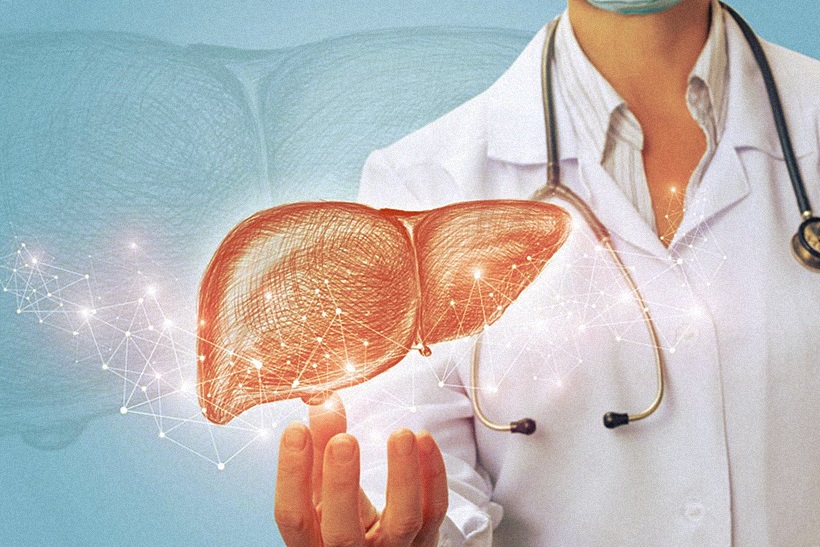Fri 09 August 2019:
If you’re not a big drinker, you may not give much thought to the health of your liver. But there might be reason to be concerned. An estimated 64 million Americans have an often-symptomless liver condition called nonalcoholic fatty liver disease (NAFLD), which may put them at risk not only for serious liver disease, but for heart disease as well.
Many people — including doctors — didn’t pay much attention to NAFLD until the 1980s, but life insurance companies have had this issue on their radar for years, says Dr. Michelle Lai, an assistant professor of medicine at Harvard Medical School. They knew that an abnormal liver blood test could reflect a lower life expectancy, and they set the premium higher or decline to insure people with the condition, she says.
A silent threat
NAFLD affects people of all ages. A majority of people with the condition have what’s known as simple fatty liver, which is just an accumulation of fat cells in the liver. But over time, some people go on to develop a more serious version of the disease, known as nonalcoholic steatohepatitis, or NASH. In these people, the excess fat has triggered dangerous inflammation and scarring in the liver. For about 5% of people with NASH, that inflammation will lead to buildup of scarring known as cirrhosis. People with NASH may also develop liver cancer or end-stage liver disease, says Dr. Lai.
Problems with the liver aren’t the only concern related to NAFLD. People with NAFLD are also more likely than others to develop dangerous plaque inside the heart’s arteries that can lead to a heart attack or stroke.
A risky condition
Your risk of NAFLD is influenced by a combination of factors. Risk factors for NAFLD include obesity, diabetes, high blood pressure, high cholesterol, a larger waist circumference, and a family history of fatty liver disease.
Some risk factors are under your control; others are not. “You can’t change your genes, but you can change your lifestyle, including diet and exercise, which can help you reduce your risk if you have a strong family history of the condition,” says Dr. Lai.
Treating and reversing NAFLD
Most people who have NAFLD won’t have symptoms and only learn they have the condition after they have blood tests performed as part of an annual physical or insurance examination. Even NASH doesn’t typically produce symptoms, although some people may feel tired and have a dull ache on the upper right side of the abdomen.
If your doctor diagnoses you with NAFLD, there are steps you can take to reverse the condition. The liver is a resilient organ and the only one that has the ability to regenerate, says Dr. Lai. “This is why you can donate more than half of your liver and it will regrow to 90% of its original size,” she says. Early-stage liver problems can improve quickly, and it is even possible to reverse liver scarring before it gets to the advanced stage, simply by making lifestyle changes, says Lai. These include the following:
Lose weight. If you have mild NAFLD that shows fat without inflammation, losing just 5% of your body weight may be enough to reverse it. If you have more inflammation, losing 7% to 10% of your body weight can reverse it, says Dr. Lai. For a 160-pound woman, that might mean losing as little as 8 to 16 pounds. However, typically only 15% of people are able to maintain the loss. Support can help, she says. It should include strategies to reduce stress, improve time management, and help modify social practices, such as how to deal with restaurant-sized portions and maintain weight loss in a culture that celebrates every small victory with food.
Exercise regularly. Even without weight loss, exercise improves your metabolic profile and decreases insulin levels, says Dr. Lai. Exercise can be as simple as walking. Any regular movement make a difference. Government recommendations call for at least 150 minutes a week of moderate-intensity exercise, which is exercise that makes you breathe heavily enough that you can talk, but not sing. But even a smaller amount can help, and you can build from there.
Improve your diet. If possible, try to adopt a Mediterranean-style diet, which is one that is rich in fruits, vegetables, whole grains, lean meats, and healthy fats. Also try to cut down on juices, sodas, and sugars, including fructose, which has been linked to liver inflammation, says Dr. Lai.
There’s a big push right now to develop drugs to reverse NAFLD, says Dr. Lai. But even if those medications become a reality, people will still need to make lifestyle changes to protect their health.
(Harvard Women’s Health Watch)
Think your friends would be interested? Share this story!





